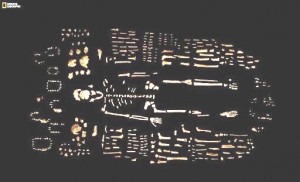By Elise Schoening
Review Editor
Earlier this week, National Geographic researchers revealed the findings of a new species that is believed to be an early ancestor of Homo sapiens. Researchers announced the find on Thursday, Sept. 10, reported CNN.
The remains of the new species, named Homo Naledi, were unearthed from the depths of a cave in South Africa, according to CNN. The monumental find includes over 1,550 remains, which were discovered at the Rising Star Cave outside Johannesburg, South Africa.
“It is the most significant and extensive discovery of early human relative fossils ever made on the continent of Africa,” paleontologist and excavation leader Lee Berger said to R&D Magazine.
Reaching the fossils proved difficult, as the cave entrance measures a meager 7.5 inches in diameter. According to National Geographic, six female researchers with small frames were brought in to excavate the bones from within the cave. They had to squeeze through a number of tight passageways to reach the final chamber that was littered with ancient remains.

The team has uncovered the remains of at least 15 individuals of various ages, including infants, teens and even a fully-developed adult, reported The Guardian. Berger and his team have used these remains and modern technology to reconstruct the new species, which appears apelike and shares many characteristics with humans. The males are believed to be roughly five feet tall, while the females are slightly shorter, according to The Guardian.
The researchers have not yet been able to identify how old the bones are. The new species possesses a remarkable mix of both primitive and advanced characteristics. The structure of their legs and feet allows them to walk upright, reported National Geographic. Their hands also share an uncanny resemblance to human hands. Yet, their finger bones are curved, a common feature among apes.
According to Berger, there are still hundreds, if not thousands, of remains within the cave that have not yet been excavated and we still have much to learn about these distant ancestors of ours, reported National Geographic.
“Homo Naledi was doing something that until this moment, we thought was unique to modern humans,” Berger told National Geographic. “That is deliberate disposal of the dead.”
This idea demonstrates the complexity of our ancient ancestors and challenges the common notion that humans are far more advanced than other species. Even in 2015, we still have much to learn about our lineage.
“What Naledi has taught us is that there is clearly more out there that we didn’t know,” Berger said to National Geographic.







